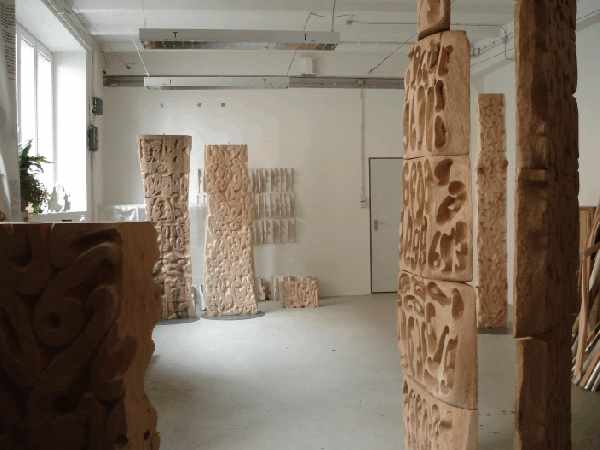| Description |
© NELE STROEBEL |
hortus conclusus – monastery garden |
Project description |
|
The hortus conclusus, the enclosed garden, was one of the most popular motives in medieval art. In reference to the Song of Solomon, it interprets the virgin Mary as a fruitful, but closed garden. Artistic representations depict a flowering, walled-in garden, with Maria, the baby Jesus and other women. This book handles the biblical roots of the garden motive and the hortus conclusus in art history. It describes the significance of the garden as a vision of paradise and as a space in today's isolated monastical life for contemplation and recreation. In completing this project, I visited the enclosed gardens of 15 convents between July and Octoer 2006. (Travelogue as pdf [German]) Interviews, photographs, drawings and their realization assculptures helped the nuns trace such questions as "How can a place store memories?" "Do enclosed gardens have special measurement and classification systems?" "How can spirituality be lived and spatially experienced in the 21st century?" These insights and impressions bridge the gap to contemporary artistic confrontations with this subject. The pictorial travelogue is supplemented by the theological remarks of Reinhold Then, the art-historical views of Esther Meier and an introduction by Walter Zahner entitled: "Ein geistiger Raum wird zum Bild" ("A spiritual space becomes a picture"). 
Statement by Nele Stroebel:THE GARDEN AS A THIRD SPACEMy interest in the hortus conclusus is of an artistic nature: my sculptural interventions and installations take place mostly in rebuilt inner courtyards. Here, I explore architecture and topography to generate a living ambience with geometric bodies of metal and terracotta, which continues to reverberate in the user's daily life. The historic cloister gardens of Catholic nuns which I visited were located primarily in non-public areas. Most were little known. I obtained interesting information both from the nuns themselves as well as from priests. In the end, I was allowed through the closed gates of these gardens through the help of books about my sculptures. These convinced the abbesses, mothers superior and garden sisters about my ideas and their transformation into material, let them recognize the seriousness of my request, with the result that they took a great deal of their time for me. I was able to win Munich photographer Ulrike Myrzik, of Myrzik & Jarisch, for our trip in summer 2006. 
|